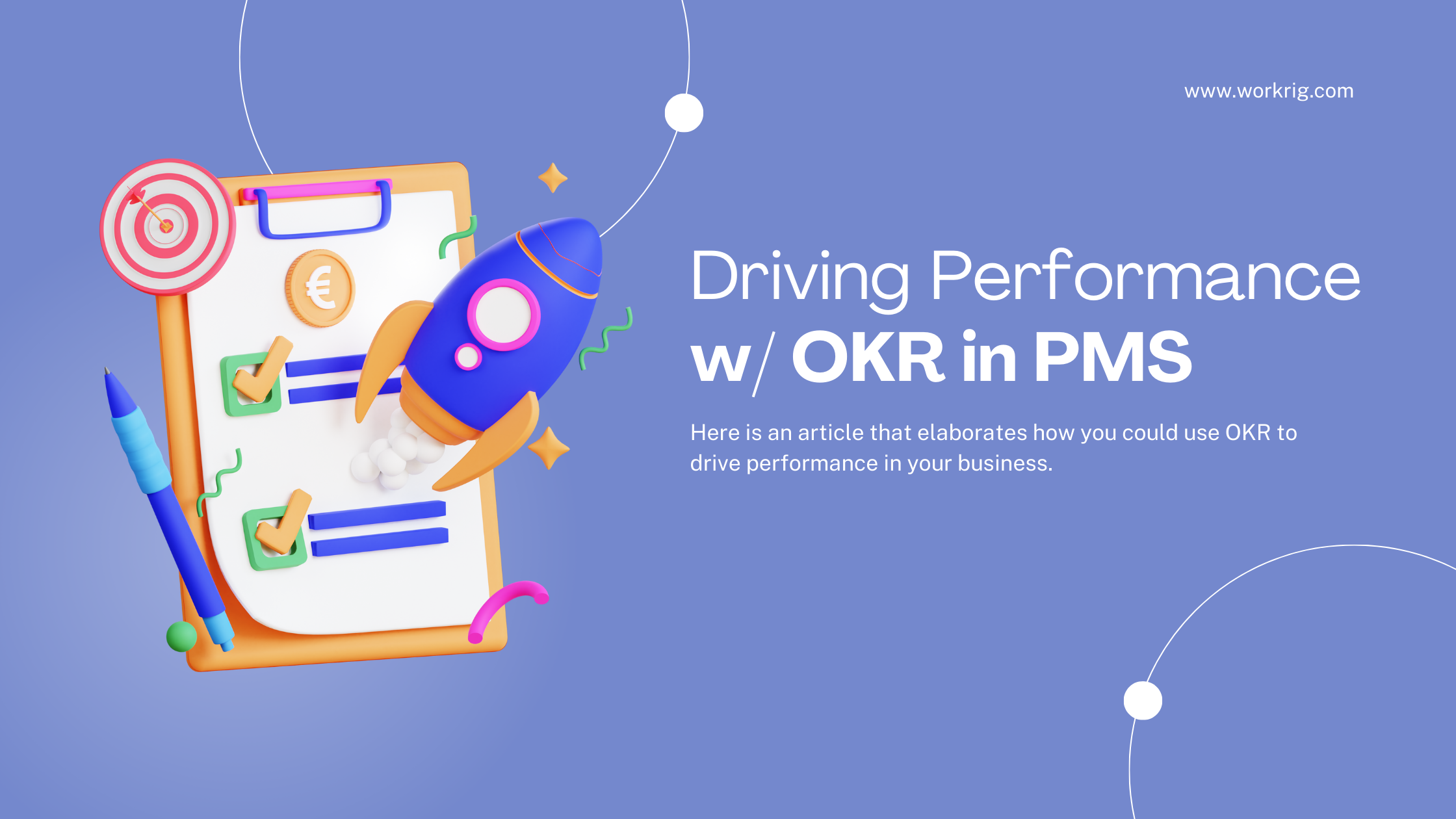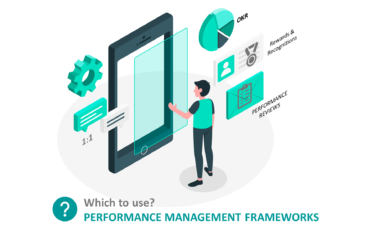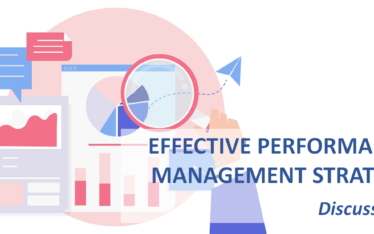Driving Performance with OKR in a Performance Management System

OKR stands for “Objectives and Key Results,” a goal-setting and performance management framework that helps organizations define and track their goals in a structured and measurable way. OKRs are a strategic tool to align individuals, teams, and the entire organization towards common objectives and drive focused and effective performance.
OKRs may have one of these objectives based on the organization’s needs.
They’re primarily used to:
Build – Create a new objective that is new to the organization
Improve – Change the current process/product to a better version
Innovate – Change the idea of the current process with creative ideas
So, objectives have to be clearly defined based on the results needed. Once the objective is defined, KRAs have to be defined as Precise, Measurable, Relevant, and Realistic, followed by tasks to accomplish the KRAs.
Most organizations choose the OKR performance management system due to its numerous advantages and effectiveness in driving performance, alignment, and growth. It offers several benefits to organizations to help align teams and individuals with the company’s strategic objectives, fostering transparency, accountability, and continuous improvement. Here are some of the key benefits of using the OKR framework.
- Defines Objectives
An objective is a clear and concise description of a specific goal or outcome that an individual, team or organization aims to achieve. OKRs provide a framework for setting challenging and aspirational objectives that align with the company’s mission and strategic priorities. OKR objectives give a clear direction on the organization’s growth and progress, which helps in high-end analytics for the top management, growth ventures, market penetration and visualizing specific success attributes.
- Set Measurable Key Results
Key results are specific, measurable, and quantifiable outcomes that indicate progress towards achieving the objective. Each objective typically has multiple key results, providing a way to track success objectively. Key results are the strategic building blocks to achieve the objectives with specific weightage assigned for a specific period. Also, KRAs are configurable, which helps in aligning goals across various organization levels.
Employees have clear directions for achieving their goals successfully and are rightly engaged, which impacts employee retention and brand value.
- Focus on Results, not Activities
OKRs emphasize the importance of outcomes over just completing tasks. This helps individuals and teams concentrate on the impact of their work rather than solely on the activities they perform. OKRs communicate the activities that add value to the organization’s goals. When resources have a clear direction, they become accountable and actively contribute to result-oriented progress, and such strategic activities eventually give the desired results.
- Goal Alignment
OKRs align individual and team goals with the organization’s strategic objectives. By cascading high-level objectives down to lower levels, every employee’s efforts are connected to the broader mission and vision of the organization. Ideally, every employee works on the progress of their cascading goals, which in turn works for the great success of organizational objectives.
- Encourages Stretch Goals
OKRs encourage setting goals that are ambitious yet attainable. This challenges teams to strive for exceptional performance and encourages growth and innovation.
This feature helps tap the employee’s talents performing well in their role, which helps in career progression and succession planning strategies. Also, it helps HR identify where the workload distribution happens correctly for resource optimization.
- Promotes Accountability
The key results in OKRs provide a clear and quantifiable way to measure progress. This accountability motivates individuals and teams to take ownership of their objectives and work towards achieving them. OKRs focus on cumulative efforts and collaborative teams, wherein every employee contributes to the team’s objective, which cascades into the positive progress of organization OKRs. It nurtures healthy competition to bring out teams’ creative problem-solving capabilities.
- Supports Transparency
Sharing OKRs across the organization promotes transparency. When employees have visibility into each other’s goals, it fosters collaboration and breaks down information silos.
OKR’s setting process allows the discussions to be recorded, which can be validated by employees who buy into the goals and measure their progress at the end of the Review cycles.
- Facilitates Performance Evaluation
OKRs provide a structured framework for evaluating performance. Managers can assess progress against key results and provide feedback aligned with the defined objectives. OKRs (with their defined outcomes) being transparent during the goal-setting process provides a rational attitude/behavior between the reviewer and the reviewer to discuss progress rather than just arguments that may not add value to the reviews. It facilitates a constructive feedback mechanism, positively impacting the employee’s performance and engagement with proper support systems.
- Adaptability and Agility
OKRs are designed to be flexible, allowing organizations to adapt to changing circumstances and market conditions. Teams can update and refine their OKRs to stay aligned with evolving priorities, and they can be adjusted when new opportunities arise. OKRs are highly configurable based on the organization’s needs at variable periods. This helps accommodate dynamic changes in the industry and the company’s strategy. This feature increases the success factors of an organization over a period of time.
- Drives Continuous Learning
OKRs encourage a culture of continuous improvement and learning. Teams analyze their outcomes, learn from successes and failures, and apply these insights to refine their strategies. OKRs help track the progress and identify strengths and challenges, integrated into performance and learning gaps. It identifies the future potential of the organization, too.
- Encourages Cross-Functional Collaboration
OKRs foster collaboration among different teams and departments as they work together to achieve shared objectives. OKRs ensure the organization’s objective is achieved, with all the valuable strategies laid internally across various departments/teams towards that common goal. This creates cumulative learning-share shadow spaces and helps everyone connect to the organization.
- Simplifies Communication
The standardized and straightforward structure of OKRs makes it easy to communicate goals and priorities across the organization. This clarity ensures that everyone understands what is expected. Also, it allows the team to pick and choose the KRAs necessary to achieve the objective successfully based on the team’s capabilities.
- Supports Remote Work
OKRs help keep remote teams aligned and focused, providing a common framework for goal-setting and performance tracking.
- Superior Employee Engagement
OKRs help in positively engaging employees with a defined purpose. They help communicate the company’s strategic big picture on a tangible note. When the employees see their contributions to the organization’s purpose, they effectively collaborate, get motivated and work smart.
- HR Analytics
OKRs dice through the organization’s objectives from the top management to the last in the hierarchy. Data insights pulled from various KRAs help understand the current status of the company’s progress and help foresee and build future growth strategies.
OKR is a strategic framework that helps organizations set meaningful goals, streamline goal-setting, measure progress objectively, and align efforts towards achieving desired outcomes. It allows organizations to stay agile and promotes accountability, collaboration, and a result-driven culture, ultimately driving performance and success.
OKRs are the future of any rapidly growing organization. This strategic tool integrates key HR modules Performance Management, Learning Intervention, Talent Management and Employee Engagement. Data from OKRs provide key HR insights/analytics, the basis on which various organization strategies and metrics can be chartered out. OKRs can be flexible to accommodate/cater to different organizational needs, with the basic framework in place and adding features if required.
Also, communication plays a vital role in successfully implementing the OKR framework. This strategic tool needs to be rightly oriented to the teams for a seamless transition from traditional HR practices.


